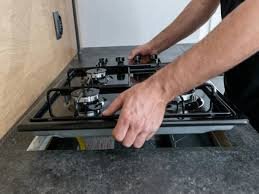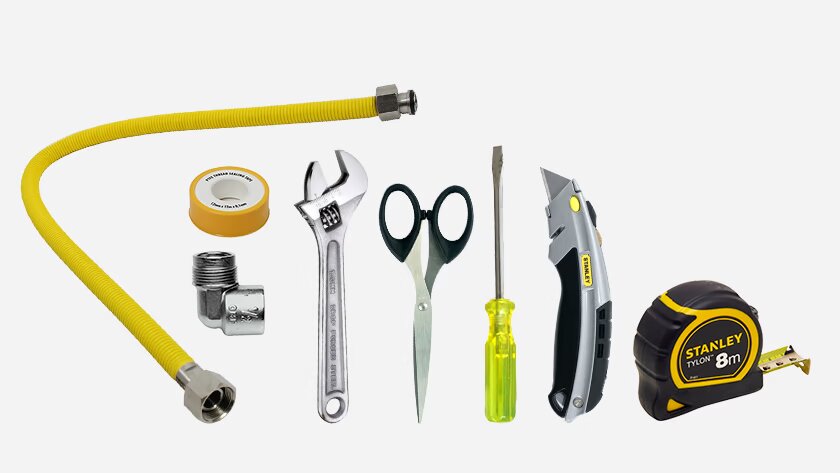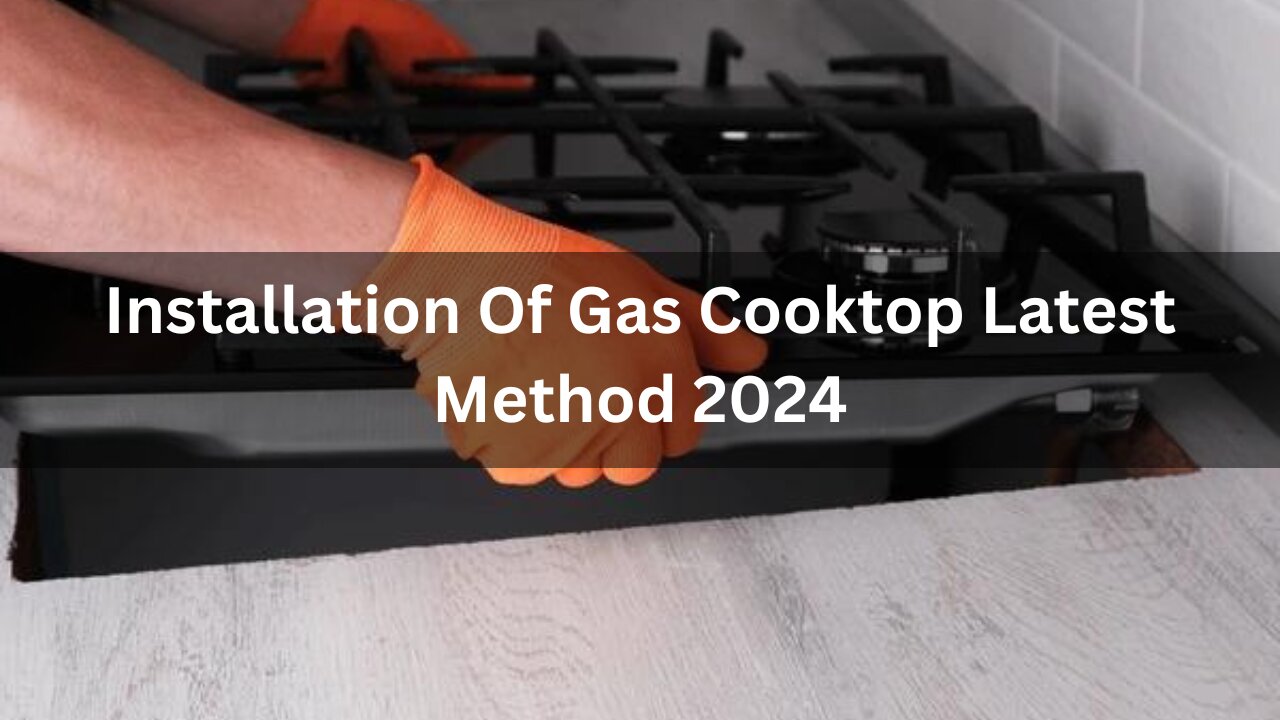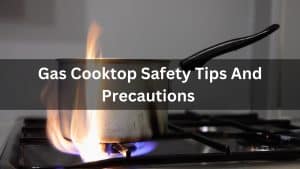Installation of gas cooktop is very easy compared to an induction or electric cooktop. You can easily install your new cooktop; you only need the knowledge to do so, which you can easily get from our article.
You only need the knowledge of installation of gas cooktop and the tools that will be used for installing it. You don’t need an experienced person to do this because running a gas cooktop requires only a gas line in every kitchen.
Table of Contents
Can you install a gas cooktop yourself?
Yes, you can easily install your cooktop by yourself because it is an easy process of installation of gas cooktop. But you only need the knowledge to install and the tools that I already mentioned in the introduction of this article.

If you have any difficulty about installation of gas cooktop, always hire an experienced person because he is an expert, and it will relax your mind about the fear of any mistake.
What is the average cost of installation of gas cooktop?
The cost of installing a gas cooktop depends on the work because if you already have a gas line, the cost is less. If you do not have a gas line, you should install one, which will make it more expensive to install the gas cooktop.
However, the average cost of installation of gas cooktop is between $300$ and $1000$, depending on the work. If you want to replace your cooktop, the cost is between $300$ and $600$.
Is it difficult to install a gas cooktop?
No, installing the gas cooktop is not difficult if you do it for the first time, but it may be difficult for you because you are trying this task for the first time. If you read our complete article, you will easily install your gas cooktop.
Step by step Guide to installation and replacement of gas cooktop
What will you need to install a gas cooktop?
| Supplies | Tools | For Gas installation |
| Power Source | Wire stripper | Spray Bottle |
| Mounting Brackets | Cutters | Water Spray |
| Cleaning Supplies | Level | Soap |
| Pipe Sealant | Electrical tape | Pipe Wrench |
| Wire Nuts | Paint Brush | |
| Junction box | ||
| Drill Box | ||
| Adjustable wrench | ||
| Pencil |

Safety Precautions During Installation
- Use proper gas-rated tools to connect pipes securely.
- Wear gloves to avoid injuries from sharp tools or edges.
- Keep fire extinguishers nearby in case of emergencies.
- Work in a well-ventilated area to prevent gas exposure.
Disconnect all the fuel sources.
The first step in installing or replacing a gas cooktop is disconnecting all the fuel sources. A gas cooktop has only a gas line, so first, to make secure work, turn off the main gas valve to turn off the gas supply.
If your gas cooktop has any system connected to the electricity, shut off the current circuit and use a tester to ensure that the wire doesn’t have current. After all the fuel sources are off, use your tools to disconnect the fuel sources from the cooktop.
Remove your old cooktop from the top.
After making sure all the fuel sources are disconnected from the cooktop, remove it from the countertop with the help of at least one more person. The one more thing that you should do before removing the cooktop is firstly remove all the parts of the cooktop, like the griddle, burners, etc., and then remove it from the countertop.
Make space for a new cooktop.
After removing your old cooktop, first clean your cooktop space, then make a place for your new cooktop. To make the space, read your new cooktop size and dimensions to make the right place for your cooktop. You can easily read them from the packing box or online from the company site.
It’s time to unbox your new cooktop. You must remove all the plastic paper and safety material from the cooktop. After doing it, remove all the gas cooktop parts like burners, knobs, etc.
Install clips and brackets.
After making the space, install brackets and clips to hold the gas cooktop on the countertop. Using a measuring table, measure your cooktop, and according to the cooktop, install your clips and brackets in the right place.
Put your cooktop into the countertop.
Once again, it is time to use the help of at least one person to push the cooktop on the countertop, adjust it to the right place where you install the brackets and clips, and use a screwdriver to tighten all the brackets and clips.
Connected the fuel sources from the cooktop
It is important to connect your fuel sources. The gas cooktop only needs gas to run, so you need only connect the gas line to the cooktop. If you find this difficult, hire an experienced technician to do this.
After connecting the fuel sources, check your cooktop for any leakage. To check for gas line leakage, use a gas line detector or soapy water if your gas pipe is naked so bubbles appear on the surface of the pipe where the gas leaks.
Then, check your burners and flame color. After doing this, check the space between the cooktop and the countertop. If there is any extra space, fill it with heat-resistant sealant.
After you complete all these steps, your cooktop is ready to work. Almost all cooktops have the same installation method. I have already written two more articles on the installation of induction and installation of electric cooktops for you.
How to Seal Gaps for a Professional Finish
Use heat-resistant silicone sealant around the edges of the cooktop to fill gaps. This prevents spills from seeping underneath and gives the installation a clean look.
Common Installation Mistakes to Avoid
- Incorrect measurements, leading to a poor fit.
- Forgetting to test for leaks.
- Over-tightening connections, which can cause damage to pipes.
- Skipping ventilation checks, risking unsafe gas buildup.
Troubleshooting Common Issues
- Burners Won’t Ignite: Check the gas supply or clean the burner heads.
- Weak Flame: Adjust the regulator or inspect for blockages in the line.
- Gas Smell After Installation: Shut off the gas supply immediately and check for leaks.
Maintenance Tips for Long-Lasting Performance
- Clean the burners and grates weekly to prevent clogging.
- Check the gas hose annually for signs of wear or leaks.
- Inspect and clean the ignition system regularly to avoid ignition failures.
Legal and Warranty Considerations
Some manufacturers require professional installation for warranty coverage. Check the documentation to avoid voiding warranties. Additionally, ensure the installation complies with all building codes and gas safety regulations.
Conclusion
Installing a gas cooktop is a manageable task many homeowners can handle with the right tools and knowledge. Unlike induction or electric cooktops, gas cooktops require a secure gas connection, which is typically available in most kitchens. While the process may seem daunting initially, especially for beginners, following a step-by-step guide can make the installation straightforward and safe.
However, it’s essential to prioritize safety throughout the installation. If you encounter any difficulties or feel uncertain, hiring an experienced technician is wise. This will ensure that the installation is done correctly and that there are no issues with gas leaks or improper connections.
The average cost of installing a gas cooktop ranges from $300 to $1,000, depending on factors like the presence of an existing gas line and whether you’re installing a new unit or replacing an old one.
In summary, with careful preparation and attention to detail, installing a gas cooktop can be a DIY-friendly project, but don’t hesitate to seek professional help.
FAQs
Can I install a gas cooktop myself, or do I need a professional?
You can install it yourself if local codes permit. However, hiring a professional is recommended for safety and warranty purposes.
What should I do if I smell gas after installation?
Turn off the gas supply immediately, ventilate the area, and check for leaks. If the issue persists, contact a gas technician.
How often should I check for gas leaks after installation?
Inspect connections every six months or whenever you notice any irregularities with the flame or gas pressure.
Can I use the same gas line for both my oven and cooktop?
Yes, but ensure the gas line has enough capacity to handle both appliances safely.
Do gas cooktops require special maintenance?
Regular cleaning and periodic inspections are all that’s needed. Ensure the burners and ignition system are kept clean to avoid performance issues.




